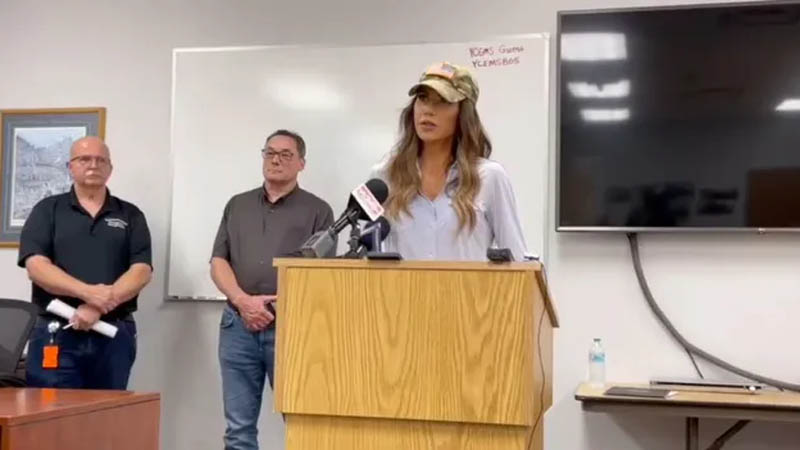Severe weather recently inundated southeast South Dakota, revealing significant shortcomings in Governor Kristi Noem’s response to the crisis. While floodwaters surged towards McCook Lake, Noem was attending a political conference and giving a television interview out of state, leaving her constituents without adequate warnings.
During the deluge, Noem made a brief appearance but then left for an out-of-state fundraiser, offering minimal crisis communication. Her decision not to deploy the National Guard for flood preparations or response was justified by claiming it would be “extremely expensive” and should only be used in a “very crisis situation.” This stance is controversial, considering she has previously deployed the National Guard to the Texas-Mexico border multiple times using the state’s Emergency and Disaster Fund.
Despite these criticisms, Noem defended her actions, stating that her flood mitigation and response efforts were informed by her experience. “We learn with every flood that happens,” she said at a Tuesday press conference.
The flooding, which occurred between June 20-22, resulted from over 17 inches of rain in some areas. The Big Sioux River rose to historic levels, affecting several towns and placing McCook Lake and its 230 surrounding homes directly in the path of the flood.
Noem’s official travel details are protected under South Dakota’s open-records laws, but journalists have pieced together her movements from social media posts. On Saturday, June 22, Noem delivered a speech at a Faith & Freedom Coalition conference in Washington, D.C. The following day, she appeared on NBC’s “Meet the Press” before returning to South Dakota later that afternoon. She led a press conference in North Sioux City, discussing a voluntary evacuation order, temporary levee construction, and road closures.
During this press conference, no urgent safety concerns about McCook Lake were raised. When asked what residents should do, Noem advised protecting personal property as flooding was anticipated. “That’s what we’re preparing for,” she said. However, the severity of the situation wasn’t clearly communicated, as the levee construction aimed to direct floodwaters towards McCook Lake, hoping they would drain with minimal damage.
The unprecedented water levels were difficult to predict, but Noem and her advisers should have raised alarms. By Sunday afternoon, forecasters predicted an earlier and higher river crest. As the water level rapidly rose, Noem left for Tennessee to headline a political event, while chaos ensued at McCook Lake. The Big Sioux River breached Interstate 29, and emergency responders worked through the night to rescue residents.
Returning for press conferences on Monday and Tuesday, Noem described the extensive damage: “We have whole homes that have fallen into the lake. We’ve got hundred-foot drop-offs from washouts, live power lines across roads, boats in trees, and half-fallen trees.”
Noem maintained that the flood’s impact was unavoidable, stating, “That mitigation plan would’ve worked in a lesser event, but there was so much water that flowed through there.” Despite this assertion, she had earlier acknowledged the river would crest at an all-time high, indicating she knew the gravity of the situation.
The community of McCook Lake learned a harsh lesson: Governor Kristi Noem’s ambitions may overshadow her responsibilities to her constituents during crises.


